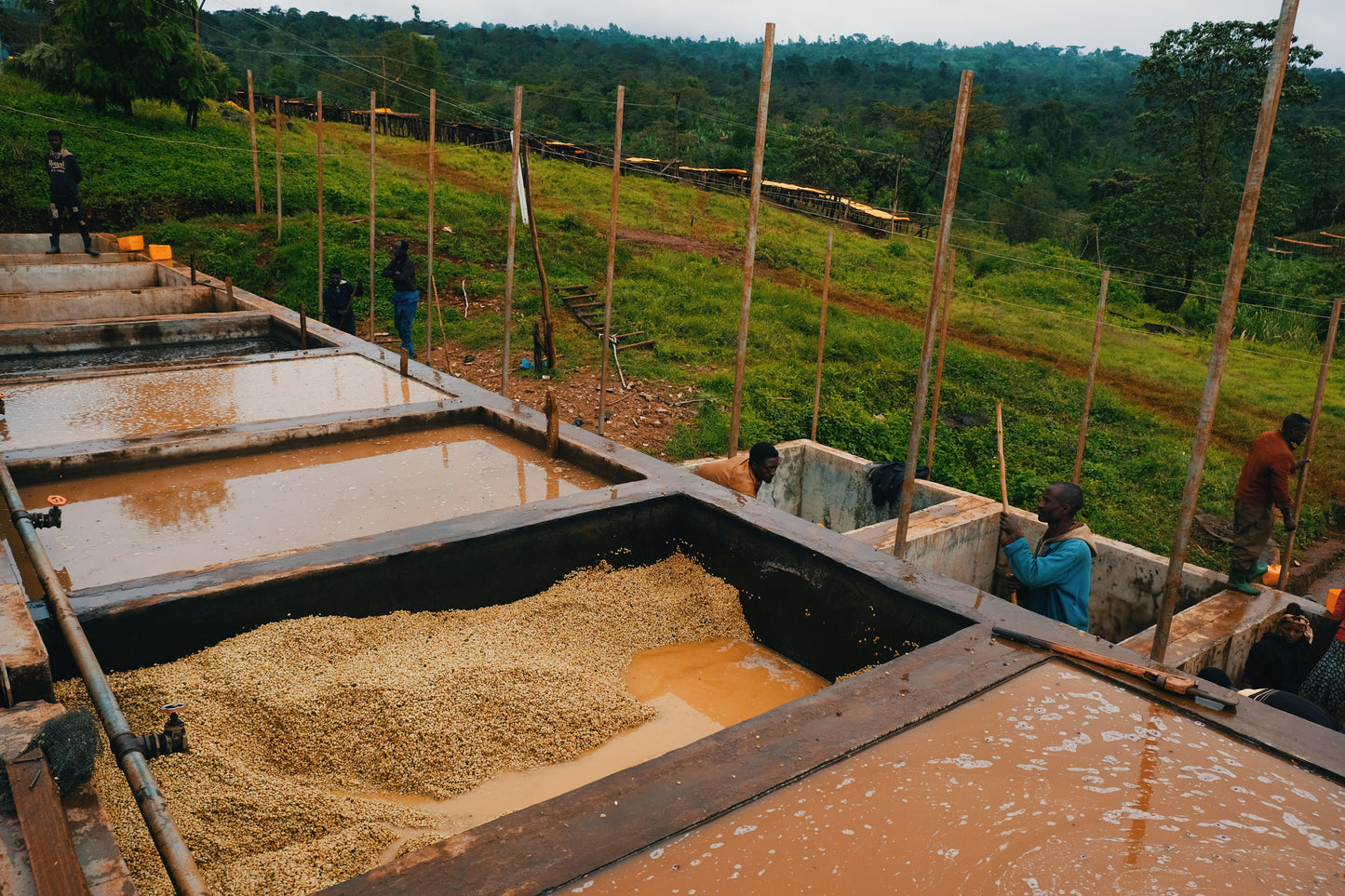
This is the second time we’ve offered this bright and fun washed Ethiopian coffee. If you’ve been enjoying our roast of the washed Demeka Becha, then this one should remind you of her best friend. You know, like when you spend so much time with someone that you begin to talk and act like each other? Like that, but with coffee. Scope it here!
The name of this coffee comes from the area in which it’s produced. “Hateso” refers to the village, and “Dambi Uddo” refers to the district, which are also known as “woredas” (kinda like neighborhoods). Zooming out a little bit more, we’re talking about the Oromia region in the Guji zone, located in Southeast Ethiopia. Grown at a super high altitude of up to 2,200 meters above sea level, this lot is made up of what’s called ‘landrace varieties’ as well as 74112.
Ethiopia is known as the birthplace of arabica coffee, and it’s thanks to seeds from Ethiopian coffee trees that we have such an abundant amount of coffee being grown throughout the world. In Ethiopia, coffee grows wild, naturally dispersed among other plants and trees in what are romantically called cloud forests. In addition, there is relatively high genetic variation found there, which means that, as opposed to other coffee producing countries where a small handful of intentionally selected varieties are cultivated, forests in Ethiopia contain hundreds, maybe thousands of naturally occurring varieties. (Read more about that here.) Of course there are Ethiopian coffee producers who intentionally choose specific varieties to grow in Ethiopia, but a lot of the coffee produced there continues to occur naturally, in these forests.
There has been a lot of work to catalog these varieties, but a word that has been used kind of as a blanket term to refer to these naturally occurring varieties is ‘landrace’. World Coffee Research defines ‘landrace’ as “a domesticated, locally adapted, traditional variety of a species of animal or plant that has developed over time, through adaptation to its natural and cultural environment of agriculture and pastoralism, and due to isolation from other populations of the species.” Kinda like how we in the USA use the term 'heirloom'.
Alternatively, JARC (Jimma Agricultural Research Center) has been working to research and categorize different varieties of coffee in Ethiopia to find those that produce a high quality cup of coffee, with high yields and resistance to pests and diseases. Once they find a solid variety that checks these boxes, they categorize it by giving it a name, such as 74112. This lot of Hateso Dambi Uddo contains some of these landrace varieties, as well as 74112.
